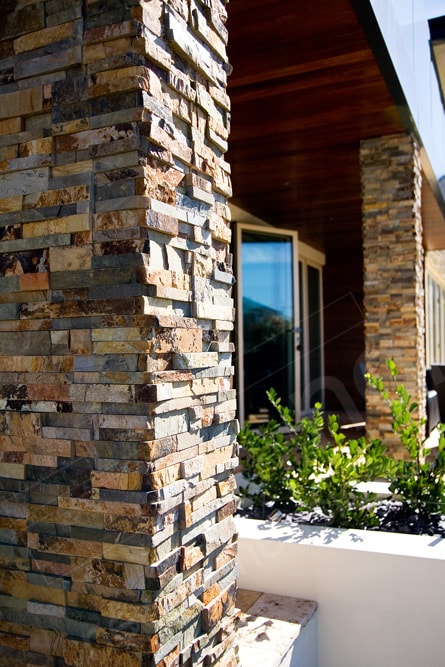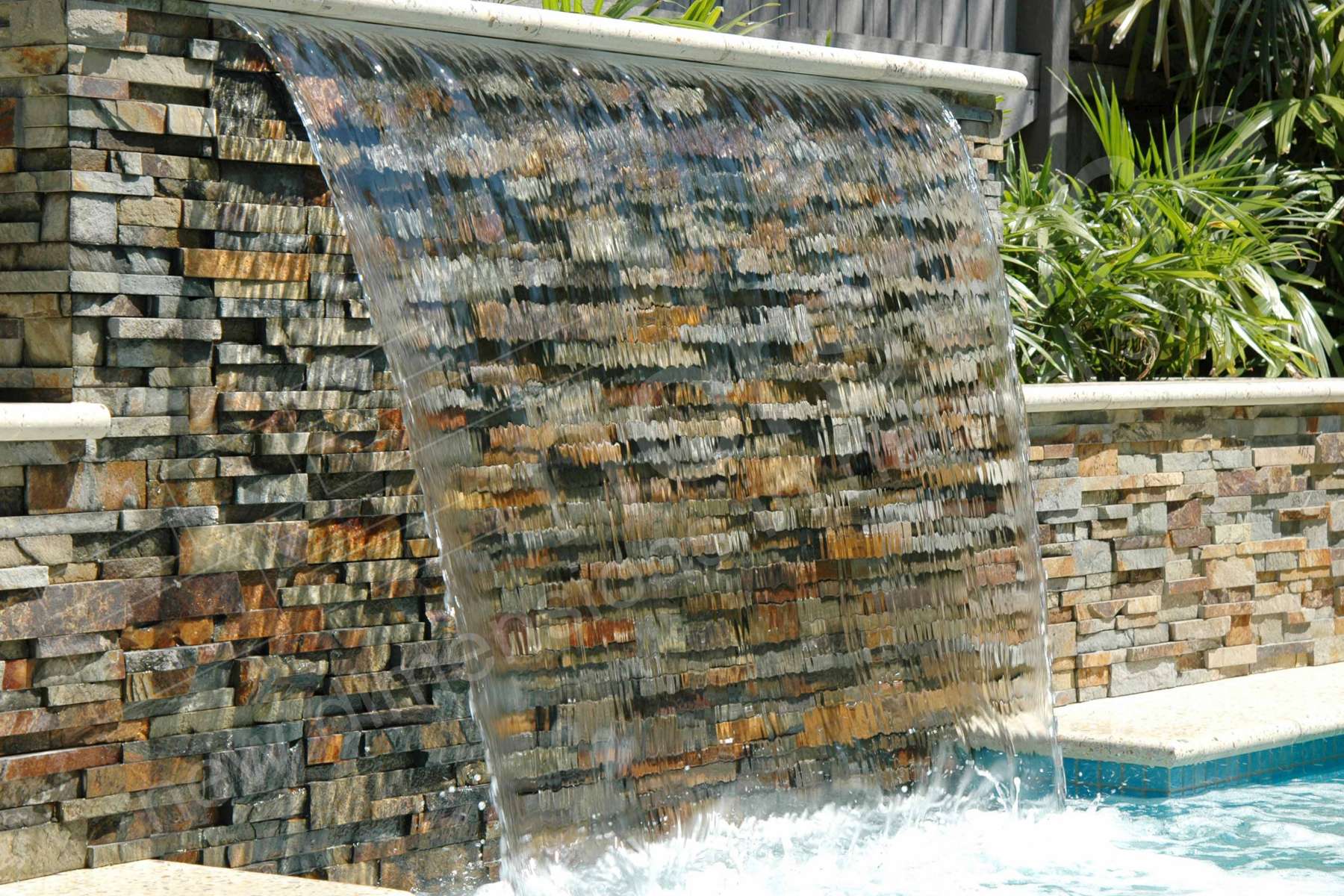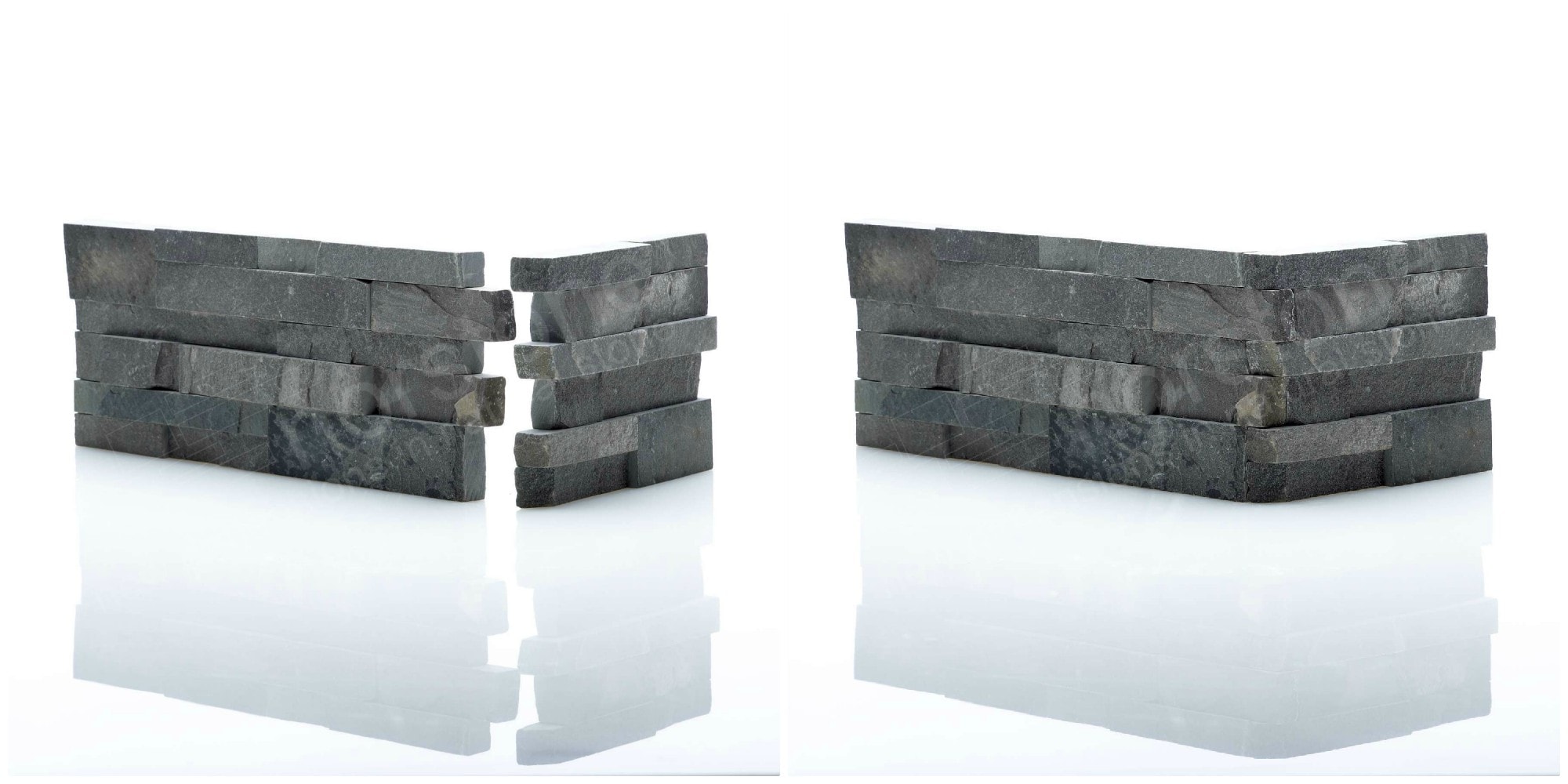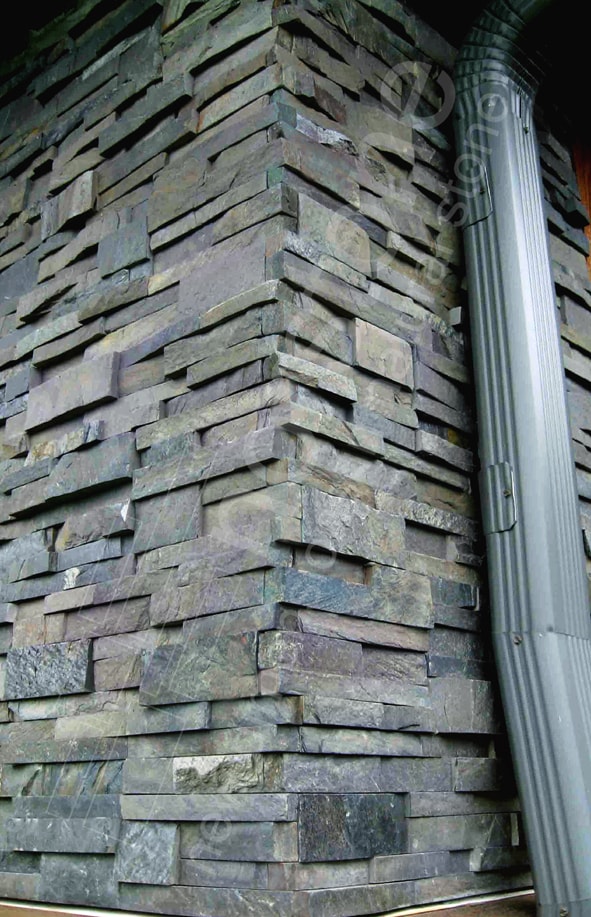Corners: Miter Cuts vs Corner Units
Ask any stone mason or tile setter and they’ll tell you that what separates an average contractor from a great contractor is how good their corners look. Corners are a natural focus point on any installation as the change in plan breaks up an otherwise ordinary field of stone or tile and creates a contrast that catches the eye. Columns can be almost exclusively corners, making them one of the most difficult projects to tackle. With all that focus on a relatively small part of a project, you can see why installers focus on the corner and use all the tools available to them to make a corner looks its best. Let’s take a look at the two most common methods of turning a corner using a stone veneer panel system – miter cuts and corner units.

What is a Miter Cut
When Norstone first started making thin stone veneer panels almost 15 years ago we told anyone installing our product to miter cut one of our 6” tall x 24” long field units to form an inside or outside corner. This process consisted of cutting a panel using a straight blade into two separate pieces, then back cutting each of those pieces using a 45 degree angled blade or wet saw rig. Since the rock panels vary in thickness, this process was only partially about making the cuts – a good installer would go back and selectively trim pieces here and there along the corner to make the two sides come together nice and tight.

Properly executed miter cuts are a great look, producing a clean, almost sharp edge that runs vertically along the outside corner, making them ideal for a modern clean look, but posing a challenge to under-experienced installers and slowing down production for even the most experienced of install team.
What is a Norstone Finger Jointed Corner Unit?
As we continued to work more closely with both architects and designers that specified our products and the masons and tile setters that installed them, one of the areas they were in agreement about was the need for a corner unit. For the specifiers, it made their job easier to specify a system and more importantly insured their vision of the project stayed true and didn’t get fouled up by a hasty installation team trying to miter cut in the field. For a tile or stone installer, a corner system was a no brainer – even at a marginally higher cost, a good corner unit system allows them to keep production high and offset the higher labor costs of miter cutting a corner in the field.

The result of this feedback is our industry leading outside corner unit. Each unit consists of two pieces, both 6” tall to match our field units, and alternating in either a 8” or 16” length. These two pieces have “fingers” which are really extensions of individual pieces of stone in each panel, that are left with a natural cleft on the faces of the stone that face out. The two pieces of each corner unit fit together and are specifically made for each other, in fact each corner unit is hand fit together to check for quality and a tight fit before being boxed up and leaving our factory. The result is an easy to install outside corner unit that creates a natural looking rounded corner that we feel is the best looking corner in the thin stone veneer market. Many manufacturers don’t have a corner option at all, and if they do, instead rely on a more basic dovetail style corner, which while much easier to manufacture, offers a far less seamless look to the corner. Corners are just one of many details that make Norstone better than other thin stone veneer manufacturers.

Why are Corners So Important for a Stone Veneer Installation?
The way an outside corner looks on a natural stone installation is important for a number of reasons. One of the main reasons is that when it comes to stone veneer products, a properly executed outside corner will look no different as a veneer vs using a full bed thickness individual stone product. If the corner is not done well, due to either poor design on the part of the product or a low quality installation on the part of the installer that corner can “reveal” that the product is simply a veneer, undercutting the authenticity and luxe look of hand laid individual stones a veneer is attempting to create. Stone fireplaces among lots of other real stone applications encapsulate exactly why well executed outside corner units are so important as they form a prominent part of most fireplace installations when viewed either head on or from the side. Getting this small detail right can be the difference between an installation that stands the test of time and one that becomes easily replaceable with the next hot trend.
Limitations of Norstone's Finger Jointed Corner Unit
The biggest limitation of Norstone’s Finger Jointed Corner Unit is that they really only work on outside corners that have 90 degree angles. There are two flat pieces in each corner unit that come together to form a 90 degree corner, and while the unit will have some tolerance for corners that are not perfectly square, they can’t be manipulated to accommodate off angle corners, such as you might find on a corner fireplace that have larger degree angles from the face of the fireplace to the walls. The 90 degree corner pieces of Norstone’s finger jointed corner unit are only meant to form outside corners and should not be inverted for an inside corner application.
What Norstone Recommends
While both the miter cut and corner unit options are still used everyday by our clients, we highly recommend our outside corner units. Unless the installer has the right experience and tools for the job, and the customer is looking for the specific clean line look that a miter cut corner provides, a better option in almost every situation will be our outside corner unit system. Our in house design reps and technical team are always available to answer any question you might have about a specific corner condition on your project, so never hesitate to call us with your questions, and until then turn your corners with care!
.png)



